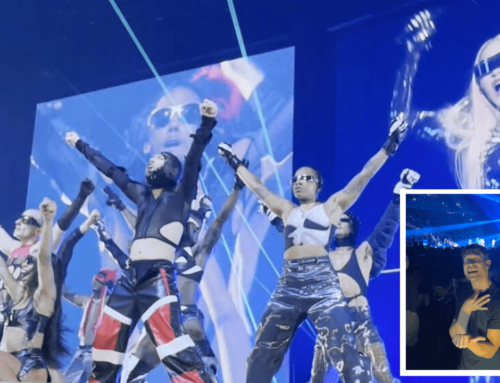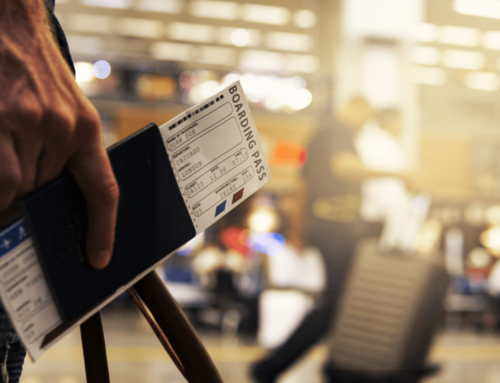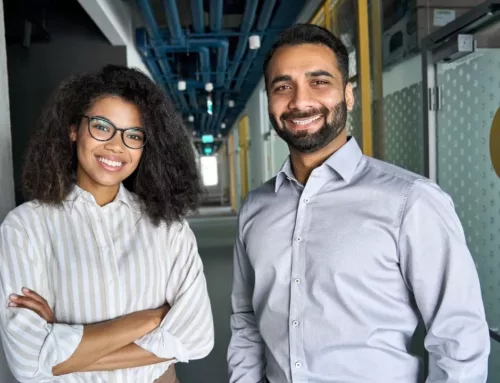A great conversation is like Fred Astaire and Ginger Rogers in action: dance partners in sync with each other, aware of and anticipating next steps, and quickly adapting from start to end.
No matter what “language” they used – vaudeville, ballroom dancing, tap dancing, soft shoe, or ballet – this legendary pair lit up any dance floor. A conversation is also much like a dance. If you’re hearing and conversing with a deaf or hard of hearing person, it’s also a Fred-and-Ginger process no matter what language (signed or spoken), or tools (pen-and-paper, or texting while standing face to face) you use.
Some things hearing people may not know about conversing with a deaf or hard of hearing person:
As a communication strategy, they may be more comfortable at the conversational steering wheel
Some deaf and hard of hearing people find that in order to keep a conversation going, it helps for them to essentially be the “moderator”. This is similar to the role of a person facilitating a panel of speakers on Zoom. This enables them to keep the conversation on track, avoid unnecessary topical tangents, and most importantly, encourage listening and turn-taking behavior to limit interruptions and multiple people chiming in with chaotic overlapping sentences.
Another way to understand this communication strategy is by looking at the cultural background of some deaf and hard of hearing individuals. Some identify as culturally Deaf (a designation shown by a capital D). Deaf Culture is known for a frankness that you may not encounter as often in the hearing world. For example, a Deaf person meeting someone for the first time may ask slightly more personal questions out of curiosity, or express opinions more directly.
Similar to East Coast (typically more direct) and West Coast (typically less direct) communication styles, understanding hearing versus Deaf Culture is key to a great conversation.

Tips for a balanced hearing-deaf conversation are not dramatically different from basic communication principles.
Some hearing people envision meeting a deaf or hard of hearing person to be like conversing with an alien (in fact, many of us at Deaffriendly Consulting have been at the receiving end of a deer-in-headlights look from a hearing person who realizes we are deaf!).
But unlike a bizarre extraterrestrial “Greetings, Earthling” visit, human-to-human communication has many universal commonalities and a shared hunger for meaningful social connection. This makes it much easier than you think – as long as you bring empathy and patience to it.
Once you get past the modality (speech, sign language, gestures, or tools like texting and paper/pen) conversation patterns are similar. For example: open-ended questions will yield richer dialogue. Asking “how was school today?” is more likely to result in one-word answers. “Tell me your favorite part of school today” is more likely to kickstart a conversation whether it’s with a deaf or hearing child.
Good listening skills matter as much as speech or signing skills. In fact, the nonverbal skills that Deaf people usually excel at (using gestural and “high-context” expressions for emphasis, making sustained eye contact, and having facial expressions of curiosity and attentiveness while listening to a story) are the same ones that help hearing people succeed in all kinds of situations ranging like negotiations, first dates, and job interviews.
In a deaf-hearing conversation, listening fatigue is real – and nothing to take personally.
In a recent “Digging Deeper” post, we explored the phenomenon known as Dinner Table Syndrome. It describes how deaf and hard of hearing people are (unintentionally) cut out of conversations while surrounded by hearing people during meals.
Sometimes the beginning of a Thanksgiving meal starts off strong with a deaf family member being engaged initially. But over time, good communication habits – like taking turns to speak, speaking face-to-face, and helping repeat missed sentences – may wear off. A deaf or hard of hearing person’s listening fatigue may result in zoning out or excusing themselves from the table early. Add in many years of being told “never mind, I’ll tell you later,” and an early exit naturally feels preferable (even if it’s not ideal).
Given the past two years of masking up, it’s safe to say that deaf listening fatigue – coupled with the usual dose of “Zoom fatigue” that plague even hearing employees and students – is at an all-time high. We can’t predict future state-by-state protocols for masking and group gatherings, but we can say this: deaf and hard of hearing people need empathy, patience, and a sense of inclusion in all kinds of social situations.
No hearing-deaf conversation is ever alike, since the spectrum of hearing loss and deaf communication preferences is so varied. But being Deaf Aware means being mindful of one’s hearing privilege and empathetic about the barriers others face in daily communication – and it goes a long way. So does arming yourself with resources and insider-based intel about Deaf Culture and becoming more Deaf Aware.






